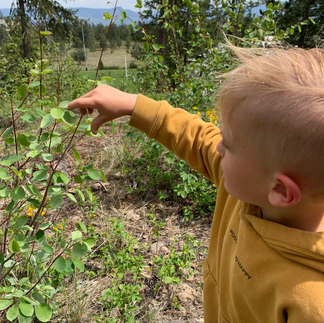What becomes possible in a culture where thoughts, feelings, and actions are at the centre of the learning?
I invite you to listen to the journey that I have been on with my children this year. This video is meant as a provocation and conversation starter and as such, any or all are welcomed to share and view with others.
Each year, my role as a deep listener and mindful observer begins as I look for what the intentions for our learning community might be. I was particularly interested in weaving stories into our learning and was wondering what the role of story might be. How I might illuminate different perspectives that aren't always represented?
This fall, after much reflection, I sat down to write an intention letter to the families of the children I was learning alongside this year. Here is a link to my letter.

I decided that this year, we would explore our identity through story. I was wondering:
How might stories nurture our sense of collective identity and belonging?
How can stories help us learn about ourselves, others, and our world?
Inside of these big questions live many smaller ones:
What becomes possible as we see ourselves as storytellers and we begin to develop a sense of our impact on the thinking and feelings of others?
How might our stories grow our abilities to listen with understanding, communicate with clarity, and support one another with empathy?
What happens when we listen to stories that reflect different experiences, new perspectives, and diverse cultures?
One of the stories that we have explored this year is the story of How Food Was Given. Throughout the year, we have been spending time with all of the Four Food Chiefs and have been learning how and when the Food Chiefs can help us to understand ourselves better.

Today, I would like to share with you a story of how I spent more than a season zooming in on Chief Bitterroot, shining the light on the role of relationship in learning.
Ultimately, it is a story about belonging.
It 'holds up' the role of the teacher as well as the high image of the child.
Through student documentation, thinking materials, and collaboration, Chief Bitterroot offered the learners in my care new language and a way of being together.
So they could make sense of what they were beginning to think about Chief Bitterroot, I offered the children thinking materials. We thought about the question: How might we show Chief Bitterroot's caring for others and the land through plasticine?


During our journey, we often went outside. I wanted to children to connect to Chief Bitterroot's relationship to the land. Through our heart lens, we were noticing our caring feelings for outside like Chief Bitterroot. We were exploring the question, how might outside love us back like a friendship?
My students had a lot to share about being in nature with Chief Bitterroot:

Rosi: "This is exciting! I love nature!"
Kinsley: "I love trees. It makes my heart feel good when I hug them."
Lily: "I love my naturedness!"
Noah: "When you play with me outside you hold my heart up.
Finn: "I feel really good being in the forest. This stick reminds me of Chief Bitterroot because it makes me really happy."
We have seen so many examples this year of how our kindess for each other and for the land have been 'popping out' of our hearts.

This week I had an opportunity to co-host a webinar and was joined by colleagues from across the district. My story is really part three of a webinar series, and grew out of the stories I heard in the first two parts of the series.
In the first webinar, Anona Kampe, a knowledge keeper with the Penticton Indian Band, shared the story of How Food Was Given, and in the second webinar, Jody Crumb and Kim Koch shared their learning story: 'Learning Through Reciprocity.'
Both of these stories made me curious and inspired me to continue to play with my own pedagogical practices.
For me, the purpose of the third webinar was to create a space for educators to get together and share their experiences with Indigenizing the learning.

Here is the slide deck I shared during that webinar:
During our webinar, Michelle Kaupp shared: "I'm excited about hearing your learning story Robbi. The relational learning part of what we do each day is so important. Always looking for meaningful ways to bring FPPL and Indigenous perspectives to help our learners to grow positive social skills and relationships. Thank you Robbi!"
Suzanna Dojohn shared, "Thank you for sharing and the inspiration. Such an amazing learning journey... to be continued together."
In the end, my hope in offering this story up is to spark future conversations where ideas and experiences around student agency & cultures of thinking can be shared among colleagues. I hope that we will keep sharing our stories with each other so we can continue to learn and grow together.
by Robbi Martens












Comments